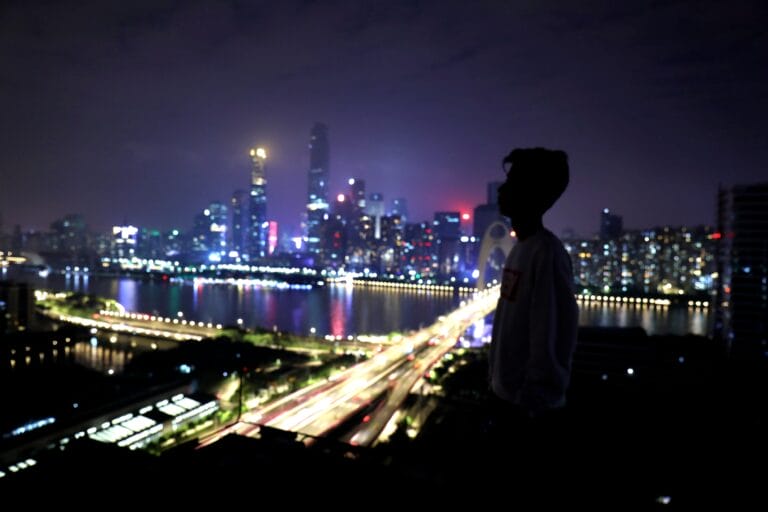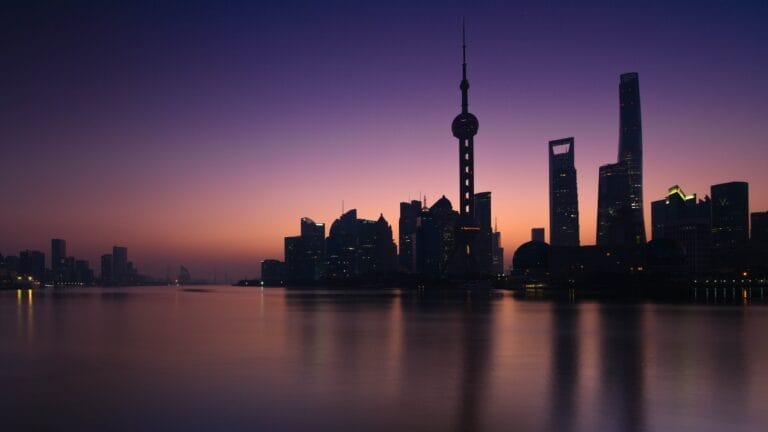Editor’s note: This October, join us as we pray for Taiyuan, a city of more than 4 million in northern China, and the capital of Shanxi Province. Taiyuan sits on the Fen River in a valley at the feet of the mountains. It has a long history as the capital of many Chinese dynasties, and still boasts many museums and temples. Today, Taiyuan is a center of industry and coal production.
China Partnership: Can you briefly introduce yourself?
Brother Wu: I’m in my 40s and have several children. I came to Taiyuan for university and stayed. I’ve lived here 20 years, and have pastored independently for the past decade.
Tan Jian: My wife and I have been married nearly 30 years. We have two children; an older son and a much younger daughter. We homeschool our daughter, and our son is already working.
Huang Mujiang: My wife and I have three children, whom we homeschool. I work with Pastor An in church planting.
Wang Zhudong: I’m 30, and my wife is pregnant with our first child. We’ve only been church planting for half a year.
Bo Kang: I came to Taiyuan about 15 years ago to church plant. I’ve served here ever since. I have two children, both in their teens.
“Red” and Closed
China Partnership: What is unique about Taiyuan among other Chinese cities? What is special about the city’s local culture? What is the gospel history of Taiyuan?
Brother Wu: Culturally, Taiyuan’s most distinct feature is that it’s really “red.” (The city has been strongly shaped by the revolutionary, Communist culture.) The Eighth Route Army once had its headquarters here. Taiyuan became – and still is – at the forefront of executing central decisions, applying Marxist thought, and advancing Communist ideas. Usually, things are implemented here, first – often to a higher degree than in other places. Because of this, Taiyuan’s mindset and culture understandably lean that way.
Taiyuan became – and still is – at the forefront of executing central decisions, applying Marxist thought, and advancing Communist ideas.
Taiyuan is an inland city, separated by the Taihang and Luliang mountain ranges. These mountains are natural barriers. To all this, add that Shanxi is an energy province and Taiyuan is an energy city. In general, people don’t need to leave the area to find work. As long as you stay on your own turf and rely on energy and coal, you can have a pretty stable life.
Never miss a story
A result is that, culturally, there is very low openness. It’s not just that Taiyuan is “red,” but also conservative, and there’s not much openness. People don’t go out much. There’s not much receptivity to new things. Because the economy is based on energy and self-sufficiency, it doesn’t seem like there’s a big need to develop new areas or to collaborate. Cultural and population mobility are both low.
You can see this in our church. Almost all college-educated, working adults are either from Shanxi Province or went to university here. This low mobility means the city is very closed. Because Taiyuan is the provincial capital, the closedness is even more pronounced.
Province of Persecution
Tan Jian: Taiyuan is an inland, mountainous city. Shanxi Province is mountainous; there’s a saying describing the province’s terrain that goes, “Rivers and mountains within and without.”[1]
Historically, this area has seen a lot of wars, and has been a strategic stronghold for many different groups. When the Xiongnu moved south into the Central Plains[2], they had to pass through Taiyuan and Shanxi. Taiyuan was a gateway, a frontier bulwark. Even the “Revolt of the Five Barbarians” began in Shanxi, as “barbarians” entered China through this province. Even now, this area is a melting pot of peoples. But in a melting pot like this, people can experience confusion or anxiety about their identity.
We are thankful Shanxi Province retains a martyr spirit. The spirit left behind by missionaries has become a memorial for us.
As for gospel history, Shanxi Province has a distinct past. During the Boxer Rebellion of 1900, Shanxi was hard-hit. That was mostly because of Shanxi Province’s governor at the time, Yuxian. Shanxi became the province with the most martyrs.
What was the impact? Even today, Shanxi Province is still hit hard by persecution. You’ll have seen reports about churches in Linfen – our own church has been impacted as well.
Yet, we are thankful Shanxi Province retains a martyr spirit. The spirit left behind by missionaries has become a memorial for us.
Noodles, Vinegar, and Coal
Huang Mujiang: I haven’t been in Taiyuan long – I only arrived a few years ago. People often say Taiyuan is all about noodles, vinegar, and coal. We are a noodle-eating culture; people love vinegar; and coal is a hallmark.
Taiyuan is an important cradle of culture. The city has many museums – people say there are a hundred and one museums in Taiyuan. There are also a lot of temples. Because this is a heavy industry city, pollution can be severe. We have four distinct seasons, and a very dry climate.
As for the gospel, like Pastor Tan said, the Boxer Persecution in 1900 was severe here.
People often say Taiyuan is all about noodles, vinegar, and coal.
Missionaries did come to Shanxi Province: Timothy Richard [an influential, highly respected Welsh Baptist missionary] founded Shanxi University, and missionaries also established many hospitals. But from then to now, persecution has been severe.
As far as I can tell, Shanxi Province has the highest number of arrests, criminal detentions, and harsh sentences [of Christians throughout China]. Even now, people are tense – we cannot gather freely.
Connections Are What Count
Bo Kang: Shanxi Province is indeed conservative, and the mindset here is backward. Crime rates are high. By “conservative,” I mean both thinking and governance are lacking.
At work, capability isn’t what counts. It’s connections: do you have relatives in office?
A culture of servility and officialdom is strong. In a lot of companies, the rule is: “What does the boss say?” Employees try to guess what their boss is thinking. It’s not about finding capable people who can use their gifts or looking for outstanding talent – it’s finding someone obedient, who can maintain a good relationship with leadership.
Taiyuan is not like a lot of southern cities, where competition is relatively fair. In Taiyuan, to get a job, you need bribes and guanxi. Across the city, there’s a high level of servility and awareness of power.
As far as I can tell, Shanxi Province has the highest number of arrests, criminal detentions, and harsh sentences. Even now, people are tense – we cannot gather freely.
Shanxi people are probably more focused on power consciousness than other places, even within the church. In Taiyuan, churches respect one another’s autonomy, but there are drawbacks – power issues are a weak point.
What’s unique about Shanxi? From public security to courts, justice and fairness aren’t the guiding principles; the guiding principle is directives from leaders. People don’t think about what the law says. Servility is the default mindset. Shanxi is serious in this regard.
[1] “Rivers and mountains, within and without,” or 表里山河 (biǎo lǐ shān hé) is a poetic phrase describing Shanxi’s geography and showing the province’s strategic importance. The phrase describes how Shanxi is protected both inside and out, with mountain ranges on its borders and rivers protecting it once inside the province.
[2]The Xiongnu were a group of nomadic peoples who lived north of China around the time of Christ’s birth. They regularly came into conflict with Han Chines. As they moved south, they often traveled through present-day Shanxi.
Brother Wu, Tan Jian, Huang Mujian, Wang Zhudong, and Bo Kang are pseudonyms for house church pastors in Taiyuan.
Pray for the people of Taiyuan to turn to Jesus for hope and life.































